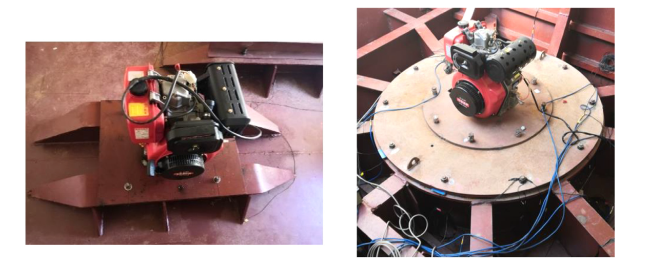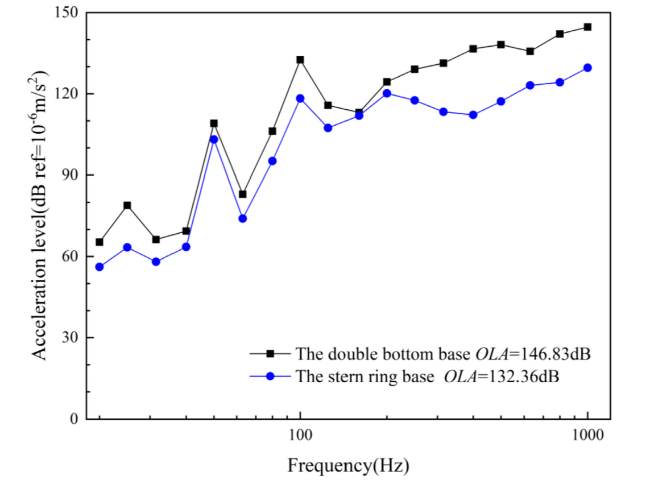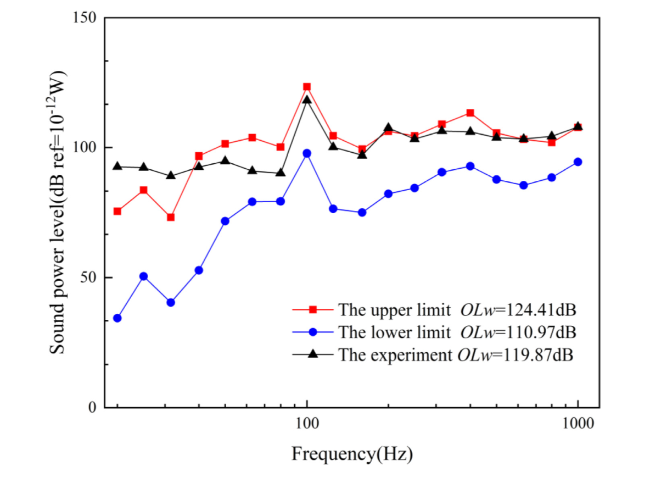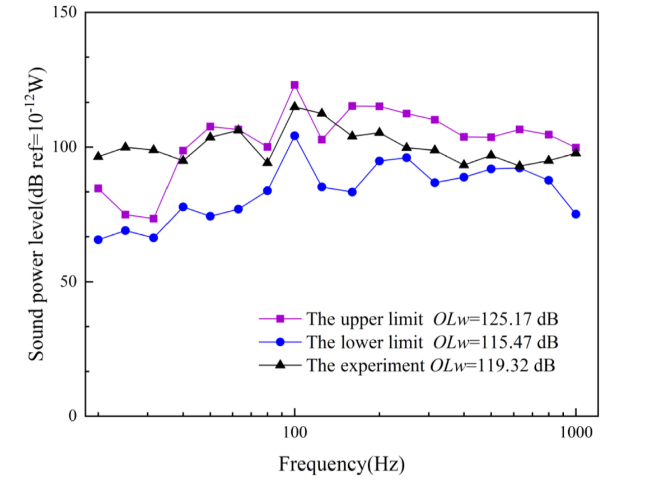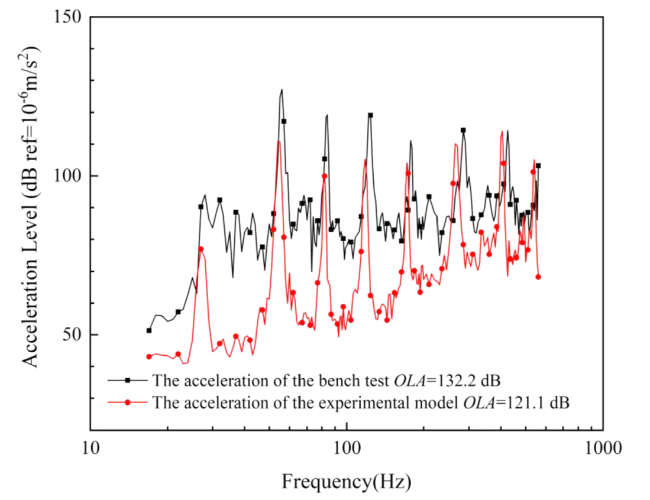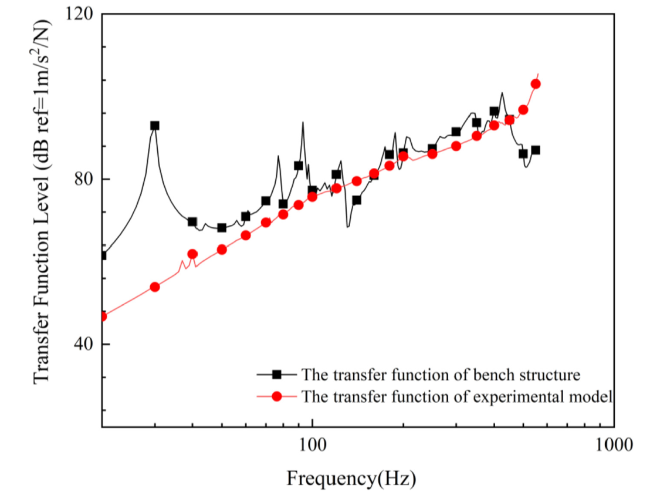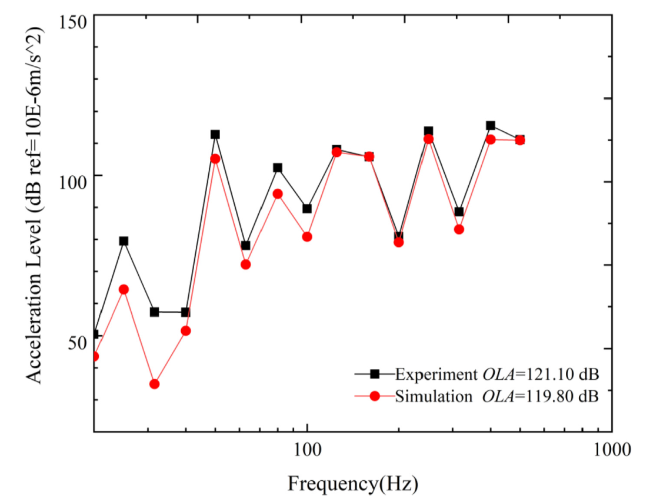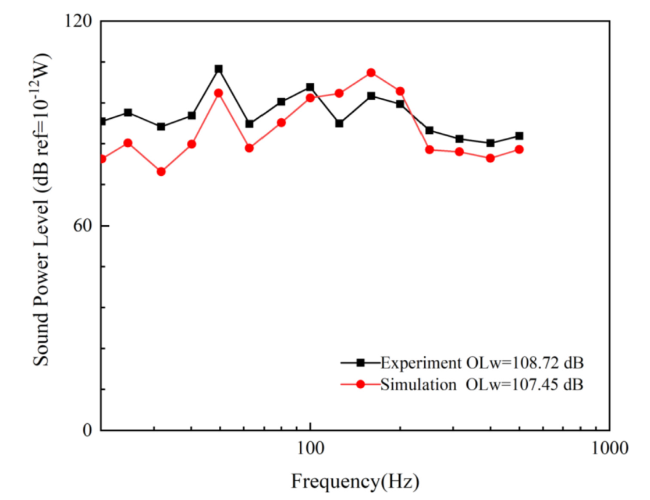1. Introduction
2. The influence of acceleration loads on mechanical noise
2.1. Numerical model
Fig. 1. The vibration and acoustic calculation model. |
2.2. Effects of acceleration components on mechanical noise
Fig. 2. The load model. |
Fig. 3. The sound power under acceleration load conditions. |
Fig. 4. Energy proportional distribution caused by the acceleration components. |
2.3. Effects of acceleration phase on mechanical noise
Fig. 5. The gradient meshing model of the experimental model. |
2.4. Effects of the acceleration amplitude distribution
Fig. 6. The effect of acceleration amplitude distribution on underwater radiated noise. |
3. The load criteria of ships’ mechanical excitations
3.1. The underwater radiation sound field under standard load
3.2. The first load criterion
Fig. 7. The mechanical model of the equipment and base system. |
3.3. The second load criterion
3.3.1. The vibroacoustic transfer function based on acceleration load
3.3.2. Predicting mechanical noise based on the average acceleration
Fig. 8. The equivalent mechanical model of the equipment for the three types of load model. (a) Fz load model;(b) Mx load model; (c)My load model;. |
3.4. The third load criterion
Fig. 9. The mechanical model of load identification. |
4. Experimental validation
Fig. 10. the experimental model in water. |
Fig. 11. the principle diagram of the testing system. |
4.1. Validating the first load criterion
Fig. 12. The experiments for the first load criterion. |
Fig. 13. The identified force by the first load criterion under the shaker. |
Fig. 14. The sound power by the first load criterion with experiment. |
Fig. 15. The identified force by the first load criterion under the diesel engine. |
Fig. 16. The power results by the first load criterion under the diesel engine. |
Table 1. The results of the two load conditions based on the first load criterion. |
| Load condition | Comparison object | Overall level error/dB | Correlation coefficient | Standard deviation/dB |
|---|---|---|---|---|
| Shaker | Force | 0.80 | 0.70 | 1.02 |
| Noise | 2.09 | 0.94 | 2.77 | |
| Diesel engine | Force | 1.88 | 0.84 | 6.44 |
| Noise | 0.21 | 0.86 | 3.02 |
4.2. Validating the second load criterion
Fig. 17. The two load conditions of the diesel engine. |
Fig. 18. The measured acceleration loads of the two engine diesel load cases. |
Fig. 19. The upper-lower limits of the sound power with the double-bottom base. |
Fig. 20. The upper-lower limits of the sound power with the stern round base. |
Table 2. The results of the two load conditions based on the first load criterion. |
| Load condition | Upper limit value/dB | Lower limit value/dB | Energy-averaged value/dB | Experimental results/dB |
|---|---|---|---|---|
| The double-bottom base | 124.41 | 110.97 | 119.36 | 119.87 |
| The stern round base | 127.00 | 115.47 | 120.14 | 119.32 |
4.3. Validating the third load criterion
Fig. 21. The measurement of acceleration loads on different support foundations. |
Fig. 22. The acceleration load testing results. |
Fig. 23. The transfer function on different support foundations. |
Fig. 24. The comparison of acceleration loads. |
Fig. 25. The comparison of the underwater radiated sound power. |
Table 3. The results of the experimental model based on the third load criterion. |
| Comparison Object | The overall level error/dB | Correlation coefficient | Standard deviation/dB |
|---|---|---|---|
| Acceleration | 1.30 | 0.98 | 5.66 |
| Sound power | 1.28 | 0.62 | 8.61 |


















